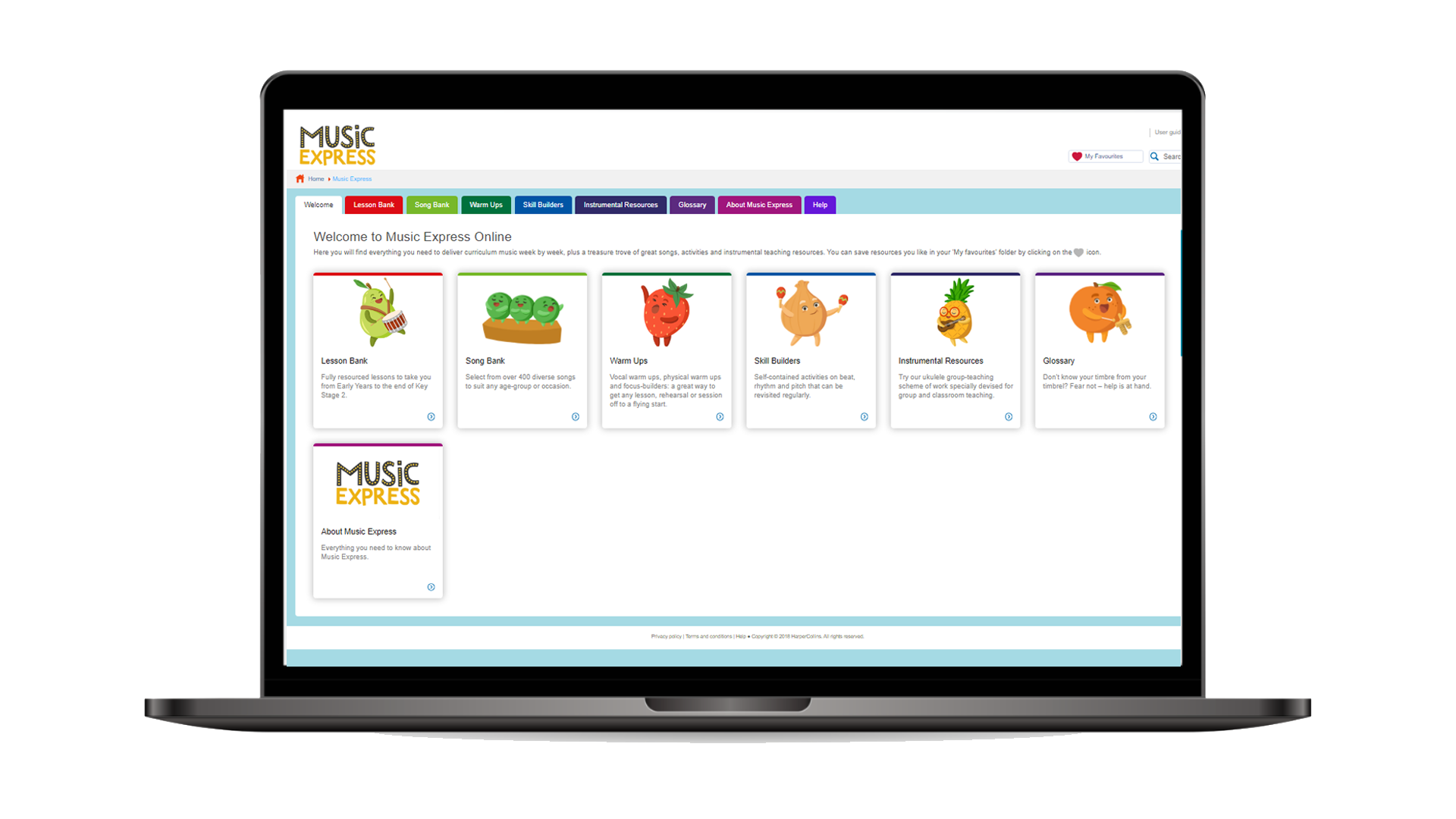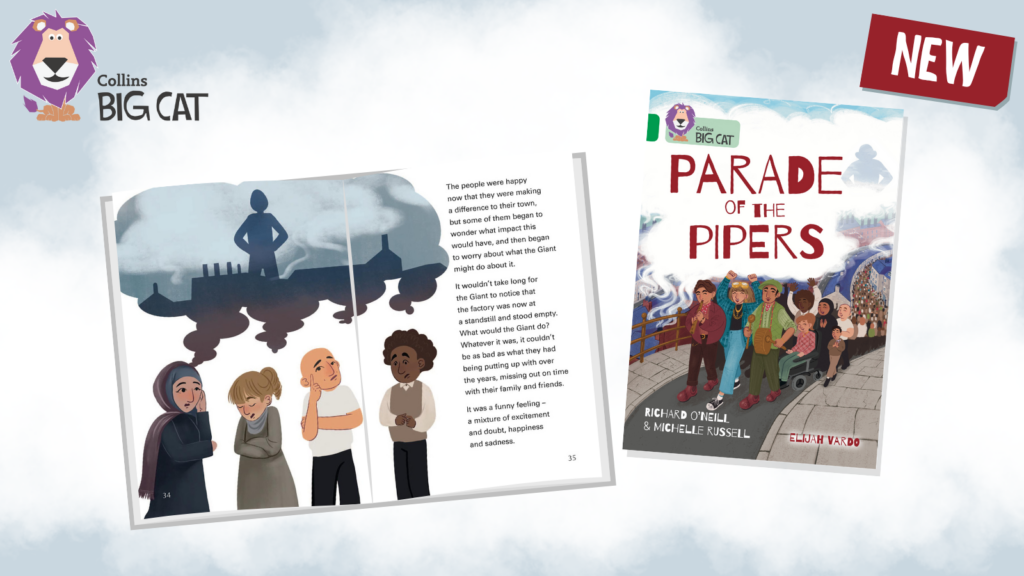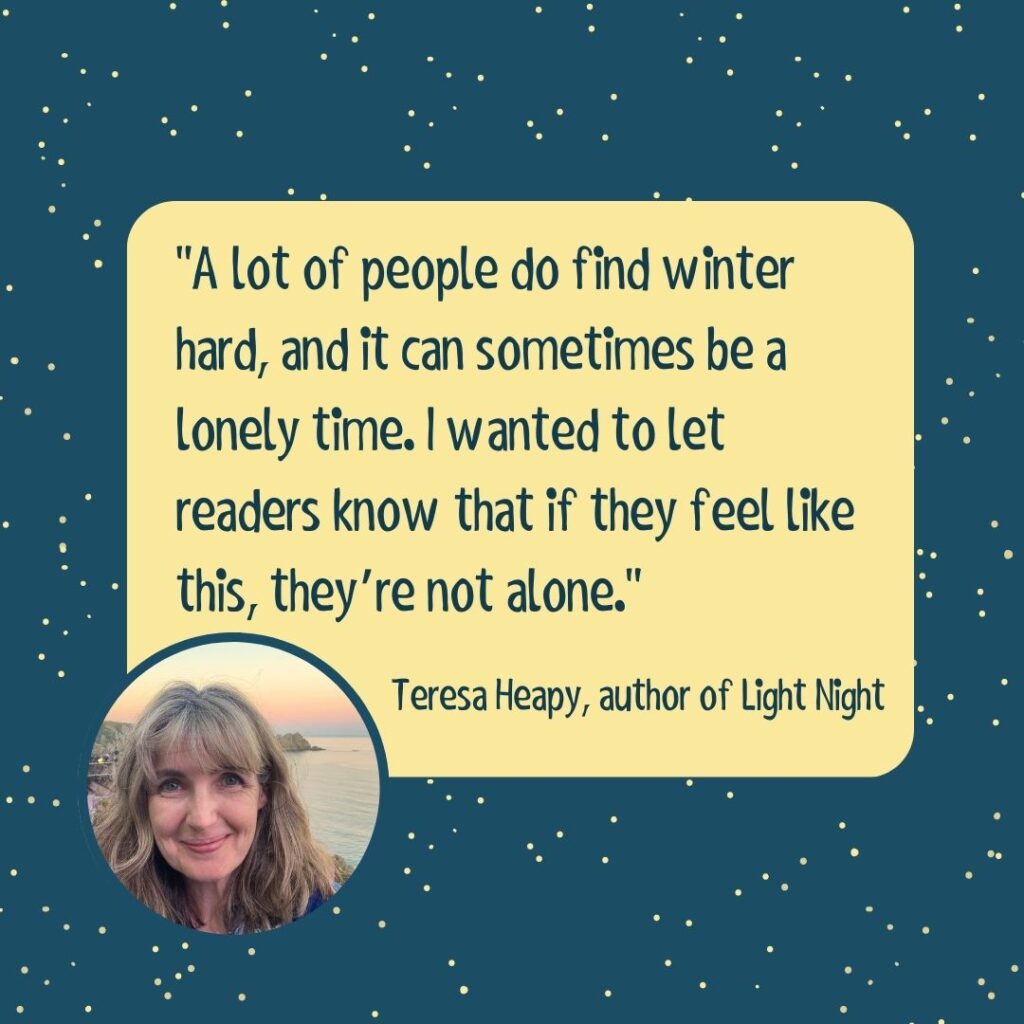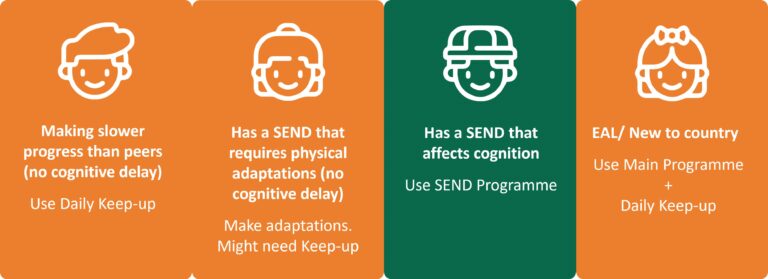As we gradually welcome children back into school, during the recovery from Covid-19 lockdown measures, they will experience unfamiliar and ongoing changes to their curriculum and ways of teaching to keep them safe. The benefits of music have been well-researched and documented and show that carefully planned music provision has the potential to support children’s emotional well-being during these disturbing times, providing a positive sense of community, confidence and enjoyment and an expressive outlet. But how can we alleviate some of the effects of this unsettling time through music teaching while observing the current safety guidelines?
The following general ideas, followed by specific examples for each age range, show how you can make simple adaptations to the music curriculum, tailored to your own school setting, which ensure children still experience vibrant music-making across the Primary age range.
Please note: As the scientific research continues you will need to observe the latest government guidelines as they change.
Singing
Singing together is uplifting and an opportunity for children to express themselves using their own personal instrument, but there are some concerns that, as well as the typical close contact of choirs, the act of singing increases aerosols, risking spread of the virus. To reduce this risk you could try any combination of these steps:
In the classroom
- provide good ventilation by opening windows and doors
- all stand with relevant spacing, facing the teacher
- hum the melody of new and familiar songs with relaxed lips
- learn to sign songs while using a ‘thinking voice’ or humming the melody
- chant the lyrics in rhythm with and without accompaniment. NB Remind children that chanting and vocalised sounds should be no louder than gentle conversational speech.
In the hall or outside
- stand in a large circle at the relevant distances apart facing inwards to hum then outwards to sing, using aural skills to blend voices
- stand in two straight lines, back to back with relevant spacing, to chant or sing.
Using instruments
The risks of contamination by shared instruments means that, for the moment, many schools are not using instruments at all. Children can use a wide range of body percussion sounds for accompanying and creating music. Practise and develop rhythm skills with hand claps, toe taps, thigh slaps, chest thumps, finger clicks and many more the children can discover for themselves.
However, while class groups remain small, you may have sufficient small hand-held percussion instruments, like egg shakers, claves, chopsticks, small hand drums to consider allocating one instrument per child. This could form part of their ‘essentials pack’, for their sole use, along with their pencil, paper and glue stick! You could even circulate them by disinfecting at the end of the week, then re-allocating, so that children have a variety of instruments over time.
Listening and composing
Listening to music and composing are both important mediums for expression, feelings of control, ownership and achievement. Improvisations using the voice and body percussion can be exciting and invigorating even when performed following the suggested restrictions above!
These examples are taken from Music Express, an award-winning educational resource used by thousands of EYFS practitioners and primary school teachers to deliver curriculum music.
Follow these examples which explore the ways I have suggested of keeping music vibrant in our schools until we can safely return to a full curriculum, hopefully, in the not-too-distant future.

EYFS
Warm ups (Physical warm ups)
Perform and create new actions to Drum tum and curl and stretch like a Jack in a box.
Skill Builders (Beat)
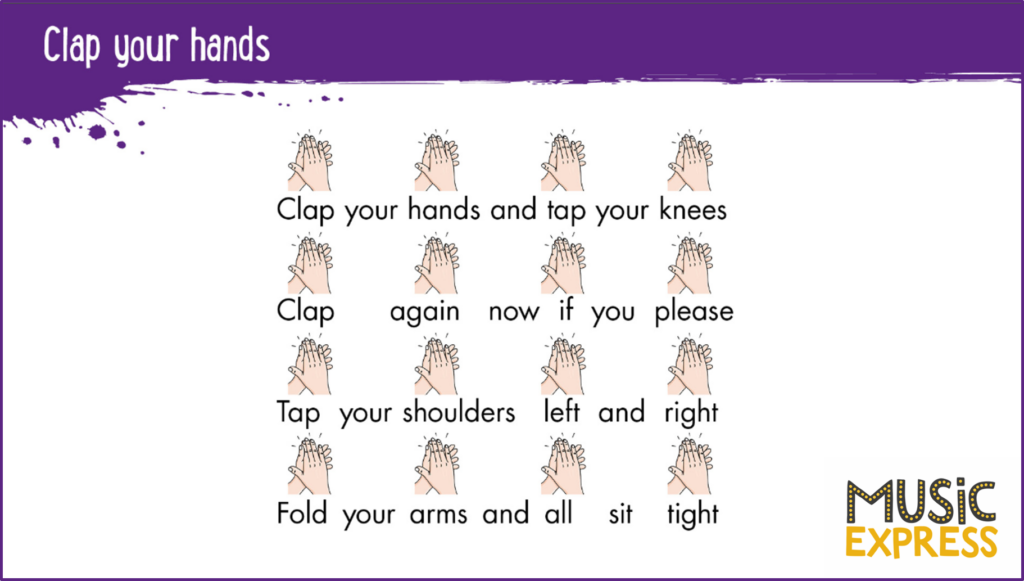
- Practise keeping a steady beat with Clap your hands, then create new verses using body percussion.
- Choose different types of footwear to step on the spot with Shoes-a-go-go in Walk the Beat: e.g. skates, slippers, skis, flip flops, hiking boots, ballet shoes…
Song Bank
- Chant and use vocal sounds to tell the stories in Please Mr Noah or Sleeping Beauty.
Lesson Bank
Unit ‘Going Places’, lesson ‘The Three Bears’ (40-60 months)
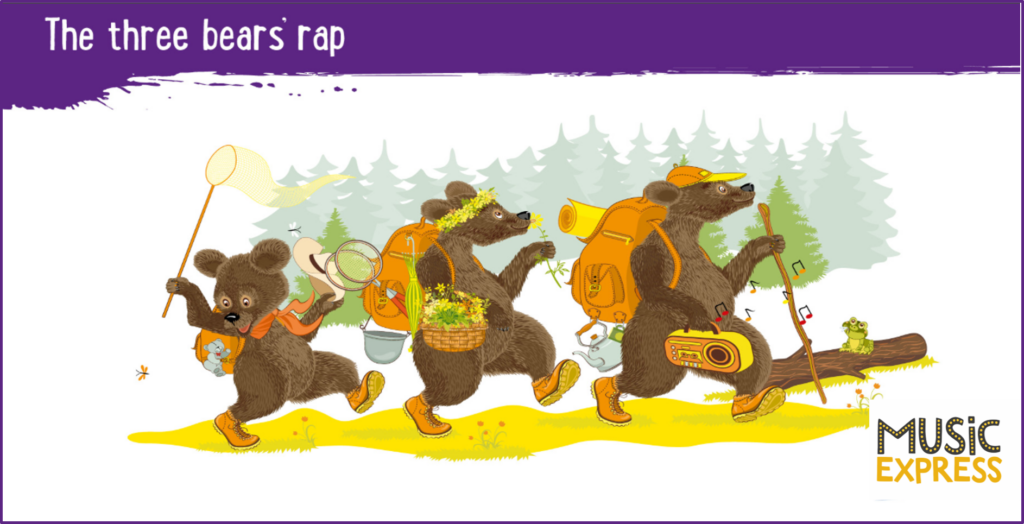
- Listen to the chanted version of The Three Bears rap and learn it with expressive voices. Add on the spot actions to illustrate the storyline.
Unit ‘Moving Patterns’, lesson ‘Shape up!’ (EY profile)
- Listen to Music market, following the chart and joining in with the body percussion as it grows. Invent your own sequence using the children’s suggestions.
Unit ‘Our senses’, lesson ‘Papery Sounds’ (EY profile)
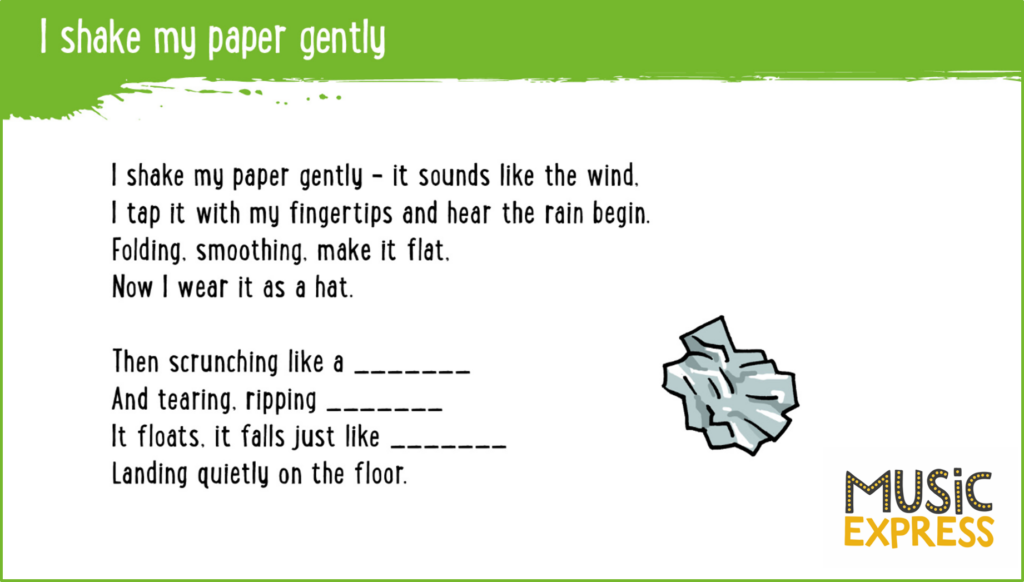
- Explore paper sounds with the poem, I shake my paper gently. Try with different types of paper.
Year 1
Warm ups (Physical warm ups)
- Learn the physical warm up chants Banana Splits and Mashed Potato and play Busy Beans to enliven the children indoors or outdoors!
Skill Builders (Rhythm)
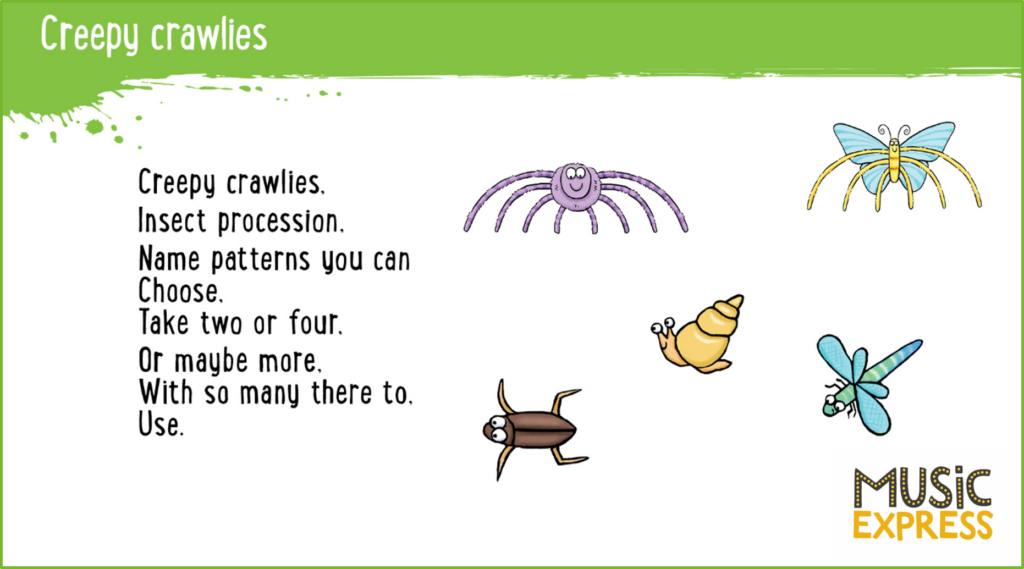
- Clap the insect rhythms in Creepy Crawlies, then repeat the patterns and combine them. Make up new rhythms using other creatures, e.g. pets or dinosaur names.
Song Bank
- Watch the video performance to learn how to sign The Dinosaur Dance or Little green men. Hum the melody as you perform a signed version with the video or performance track.
Lesson Bank
Unit ‘Machines’, lesson ‘Robot beat’
- Create a robotic dance with rhythmical actions on the spot to Robot Beat. Learn the lyrics, then perform the dance and chant together.
Unit ‘Our Bodies’, lesson ‘What’s your beat?’
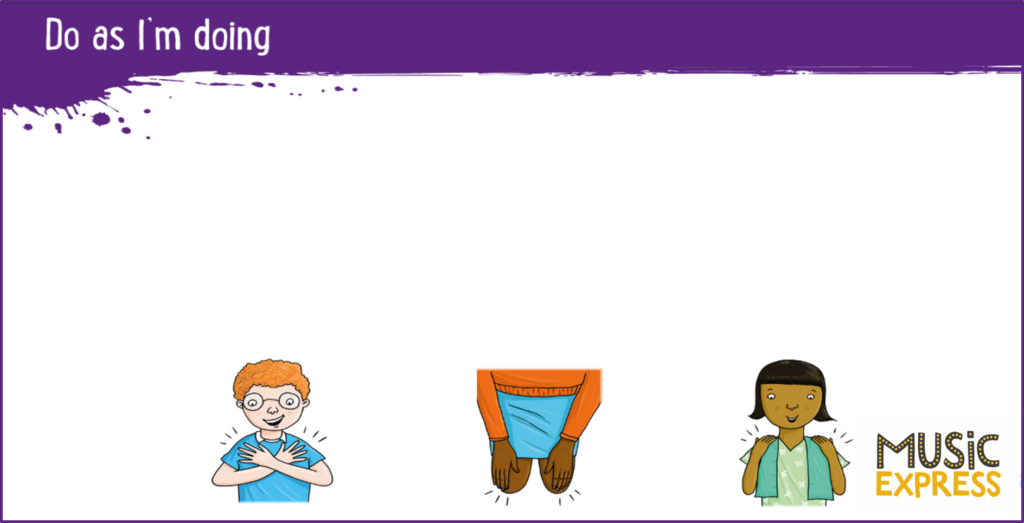
- Play two versions of a fun copying game, Do/Don’t do as I’m doing. Learn a body percussion sequence to perform with What’s your beat?, then improvise new actions with Click, flippety, flap clap.
Year 6
In the last few weeks of their (sadly disrupted) time in primary school this is an opportunity to have some fun with music games which celebrate the children’s musical skills and achievements.
Warm ups (Physical warm ups)
- Try two on-the-spot action chants to get the children energised: feel the beat with Rubber Chicken and get the whole body involved in Let’s Move.
Skill Builders (Beat and Rhythm)
Lots of progressive body percussion activities in the beat and rhythms sections here to choose from, including different notations. Boost the children’s confidence by doing these sets of fun activities and games to demonstrate what they have learnt in previous music lessons over the primary years!
- Try Twos and Fours (Beat) followed by Pop of the Peeps (Rhythm) to revise simple, steady beats on body percussion.
- Explore or revisit different metres in Time Change (Beat) and Three Four Five (Rhythm).
- Provide challenge with more advanced rhythm skills in Flamenco Fever (Beat) and Castanet Cuisine (Rhythm).
Song Bank
- Learn the Bug chant, then ask the children to contribute more lyrics to make a class performance. (You could even include the line ‘Nasty Covid virus bugs’!)
Lesson Bank
Unit ‘Class Awards’, lesson ‘Pictures at an Exhibition’
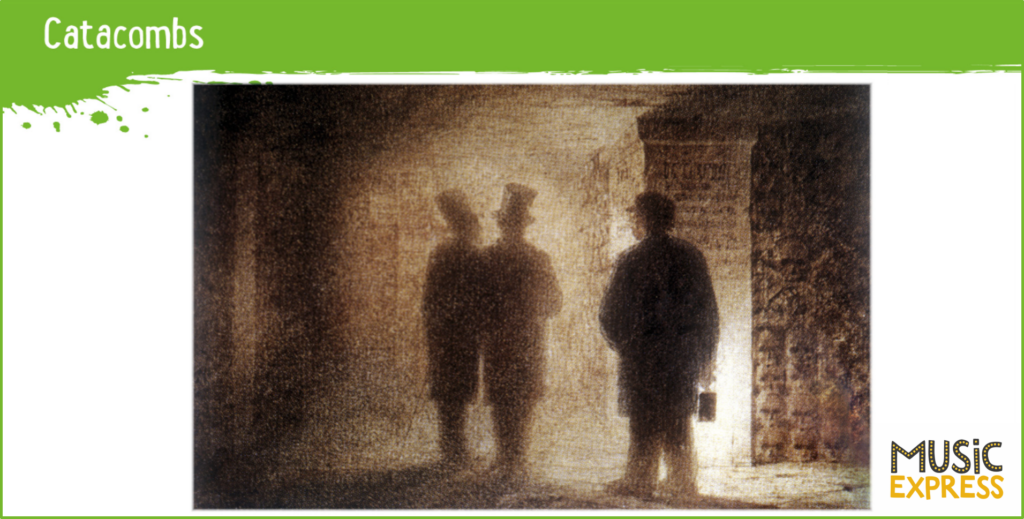
- Listen to Promenade and Catacombs from Pictures at an Exhibition then discuss the way Mussorgsky uses sound to create the pictures.
- Ask the children to individually choose or create a picture to express a feeling, mood, activity or scene. Can they create a short piece of music to accompany their picture using just vocal sounds, body percussion and using their own personal objects, e.g. keys, pencils, ruler, paper, coat zip, water bottle?
- Each child can develop their ideas at home, then present a solo performance of their piece to the class.
Unit ‘World Unite’, lesson ‘ Rhythmic dance’
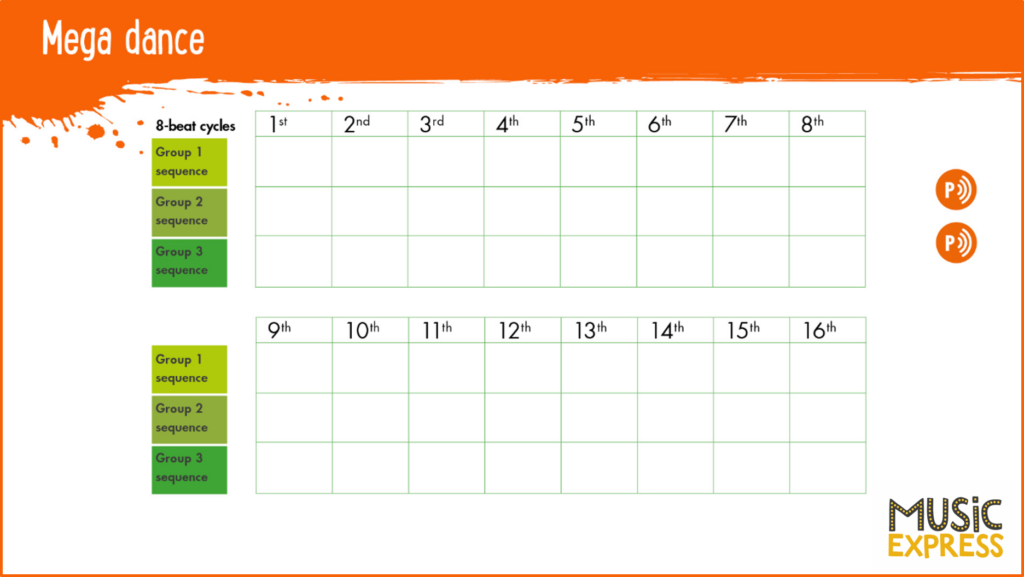
- Have lots of fun using the movies to teach three sequences of on-the-spot dance moves in Rhythmic dance, then perform the whole dance with the backing track – Mega dance (Lesson ‘Two-part step dance’ Activity 3).
- Ask the children to find their own choice of music to perform the dance with and then have a ‘rhythmic dance party’ as everyone performs the moves to a selection of different pieces!
This blog is written by Helen MacGregor, an award-winning music education author with many years’ experience of teaching music in Primary schools, teacher-training and leading children’s music festivals and holiday courses. She is passionate about giving all children the opportunity to experience and enjoy making music. Her publications include the ‘Listening to Music’ series (Primary Music Magazine Best Listening Resource 2019) and she is co-author of the Music Express scheme of work and three of Roald Dahl’s Revolting Rhyme musicals.
Music Express is an online resource for teaching primary music that’s easy to use and accessible to non-musicians as well as music specialists.
[mks_button size=”large” title=”Find out more about Music Express” style=”rounded” url=”https://collins.co.uk/pages/primary-music-music-express” target=”_blank” bg_color=”#eabb36″ txt_color=”#FFFFFF” icon=”” icon_type=”” nofollow=”0″]
